Barnet Meltzer, M.D.
See book keywords and concepts |
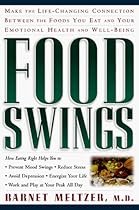 Potent antioxidants, they protect tissues and cells from potential damage by neutralizing free radicals—the toxic oxygen molecules that cause degeneration and are thought to play a role in the development of cancer. phytochemicals can also reduce restrictive coronary artery disease. They've been found to block the oxidation of LDL cholesterol, preventing it from turning into artery-clogging plaque. Potent antioxidants, they protect tissues and cells from potential damage by neutralizing free radicals—the toxic oxygen molecules that cause degeneration and are thought to play a role in the development of cancer. phytochemicals can also reduce restrictive coronary artery disease. They've been found to block the oxidation of LDL cholesterol, preventing it from turning into artery-clogging plaque. |
Dr. Richard Schulze and Sam Biser
See book keywords and concepts |
| Lobelia contains over a dozen alkaloids, one of the strongest phytochemicals found in plants.
Dr. Schulze is the only herbalist who uses large doses of lobelia, and he is also the only one who gets the results he does from it. But the lobelia tincture must be strong.
Commercial lobelia tinctures are so weak and useless you could drink the whole bottle and feel nothing.
Best Species: There are many types and species of garden lobelia. This is not one of them. This herb is a weed that has inflated seed pods, hence the name. |
Judith Wills
See book keywords and concepts |
 There is, however, one other very important tip, which will also ensure that most people will get adequate amounts of all the necessary vitamins, minerals, and phytochemicals. The message is "variety." Eat as wide a variety of foods as you can—different sources of carbohydrate, varying types of protein, and lots of different vegetables, salads, and fruits. Not only does this prevent boredom, it also ensures that you get all the micronutrients you need.
This is because even foods of the same group are not all good sources of the same things. There is, however, one other very important tip, which will also ensure that most people will get adequate amounts of all the necessary vitamins, minerals, and phytochemicals. The message is "variety." Eat as wide a variety of foods as you can—different sources of carbohydrate, varying types of protein, and lots of different vegetables, salads, and fruits. Not only does this prevent boredom, it also ensures that you get all the micronutrients you need.
This is because even foods of the same group are not all good sources of the same things. |
Gary Null, Ph.D.
See book keywords and concepts |
 Since phytochemicals aren't patentable, companies are reluctant to finance something that could cost as much as $200 million for each test.
Nevertheless, epidemiological evidence and small human trials point to benefits which may well be sleeping giants in the nutrition arena. Such is the case with licorice root. In one USDA study, licorice root, an extract, proved to be 50 times sweeter than sugar without promoting tooth decay. It contains prostaglandin inhibitors that may guard against cancer and ulcers, and it is being pursued by many companies that want to use it as a food additive. Since phytochemicals aren't patentable, companies are reluctant to finance something that could cost as much as $200 million for each test.
Nevertheless, epidemiological evidence and small human trials point to benefits which may well be sleeping giants in the nutrition arena. Such is the case with licorice root. In one USDA study, licorice root, an extract, proved to be 50 times sweeter than sugar without promoting tooth decay. It contains prostaglandin inhibitors that may guard against cancer and ulcers, and it is being pursued by many companies that want to use it as a food additive. |
Gary Null, Ph.D.
See book keywords and concepts |
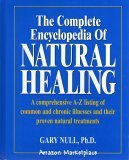 These foods are relatively hypoallergenic and rich in phytochemicals and antioxidants.
Iron-rich vegetable juice can be made from a combination of beet juice, parsley, spinach, beet greens, and watercress. Green juices should be dispensed in small quantities, as a quarter of a cup daily can improve a child's condition in a short period. The juice should be diluted 50 percent with water or apple juice, and sipped slowly.
A vegetarian diet rich in vitamins includes sprouts, raisins, kale, prunes, parsley, watercress, dandelion greens, beets, and blackberries. These foods are relatively hypoallergenic and rich in phytochemicals and antioxidants.
Iron-rich vegetable juice can be made from a combination of beet juice, parsley, spinach, beet greens, and watercress. Green juices should be dispensed in small quantities, as a quarter of a cup daily can improve a child's condition in a short period. The juice should be diluted 50 percent with water or apple juice, and sipped slowly.
A vegetarian diet rich in vitamins includes sprouts, raisins, kale, prunes, parsley, watercress, dandelion greens, beets, and blackberries. |
the Editors of PREVENTION
See book keywords and concepts |
 Research suggests that phytochemicals in the bark, called boswellic acids, interrupt the inflammation process early on and keep our bodies from producing the chemicals that cause pain, says C. Leigh Broadhurst, Ph.D., an herbal researcher and nutrition consultant based in Clovery, Maryland.
Turmeric
To relieve pain and inflammation, take six to eight 500-milligram capsules of extract a day for 2 to 3 weeks. Curcumin, the powerful anti-inflammatory substance in turmeric, isn't a drug, but it can act like one, says Dr. Broadhurst. Research suggests that phytochemicals in the bark, called boswellic acids, interrupt the inflammation process early on and keep our bodies from producing the chemicals that cause pain, says C. Leigh Broadhurst, Ph.D., an herbal researcher and nutrition consultant based in Clovery, Maryland.
Turmeric
To relieve pain and inflammation, take six to eight 500-milligram capsules of extract a day for 2 to 3 weeks. Curcumin, the powerful anti-inflammatory substance in turmeric, isn't a drug, but it can act like one, says Dr. Broadhurst. |
Dr. Gary Null
See book keywords and concepts |
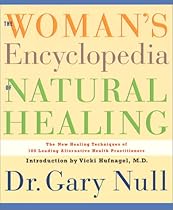 Herbal Pharmacy
Plants containing phytochemicals with antifatigue activity, in order of potency: Lactuca sativa (lettuce) Cichorium endivia (endive) Vitna mungo (black gram) Chenopodium album (lamb's-quarters) Raphanus sativus (radish) Brassica pekinesis (Chinese cabbage) Portulaca oleracea (purslane) Avena sativa (oats)
Chrysanthemum coronarium (garland chrysanthemum)
Anethum graveolens (dill)
Taraxacum officinale (dandelion)
Amaranthus sp. Herbal Pharmacy
Plants containing phytochemicals with antifatigue activity, in order of potency: Lactuca sativa (lettuce) Cichorium endivia (endive) Vitna mungo (black gram) Chenopodium album (lamb's-quarters) Raphanus sativus (radish) Brassica pekinesis (Chinese cabbage) Portulaca oleracea (purslane) Avena sativa (oats)
Chrysanthemum coronarium (garland chrysanthemum)
Anethum graveolens (dill)
Taraxacum officinale (dandelion)
Amaranthus sp. |
Judith Wills
See book keywords and concepts |
 Unrefined foods or marginally refined foods, such as brown rice, whole-grain bread, fresh vegetables and fruits, legumes, nuts, and seeds, contain all or most of the original nutrients, including fiber, vitamins, minerals, and those recently-discovered, exciting compounds called phytochemicals (see page 34).
Refined carbohydrates, such as white rice, white pasta, and white flour, contain less of these elements, although they are still worth eating. Unrefined foods or marginally refined foods, such as brown rice, whole-grain bread, fresh vegetables and fruits, legumes, nuts, and seeds, contain all or most of the original nutrients, including fiber, vitamins, minerals, and those recently-discovered, exciting compounds called phytochemicals (see page 34).
Refined carbohydrates, such as white rice, white pasta, and white flour, contain less of these elements, although they are still worth eating. |
| The antioxidant minerals and phytochemicals are discussed in more detail in the pages ahead.
¦ Vitamin K
The last of the fat-soluble vitamins, vitamin K is essential for the normal clotting of blood.
It is widespread in food in small quantities, but best sources are dark green leafy vegetables and the skins of fruit and vegetables.
It can also be synthesized in the intestines, so deficiency in adults is extremely rare and for this reason no RDIs or RNIs have been set. Infants are generally born with low levels so vitamin K is usually given at birth. |
Gary Null, Ph.D.
See book keywords and concepts |
 Once you have a cold, it's a good idea to cut down on or get rid of the gluten in your diet, as well as dairy foods, meat, sugar, and refined carbohydrates, and to focus instead on plant foods high in antioxidants, phytochemicals, and chlorophyll. Juices are particularly recommended; if at all possible, these should be freshly made from organic vegetables and fruits.
Herbs
•Astragalus...The Chinese have been using astragalus for thousands of years for immune-system strengthening. Once you have a cold, it's a good idea to cut down on or get rid of the gluten in your diet, as well as dairy foods, meat, sugar, and refined carbohydrates, and to focus instead on plant foods high in antioxidants, phytochemicals, and chlorophyll. Juices are particularly recommended; if at all possible, these should be freshly made from organic vegetables and fruits.
Herbs
•Astragalus...The Chinese have been using astragalus for thousands of years for immune-system strengthening. |
Judith Wills
See book keywords and concepts |
 Drinks and snacks
Use what you drink as another chance to get nutrients—vitamin C from juices, calcium from low-fat milk or fortified soy milk, even phytochemicals from tea—but don't forget that one of the best drinks of all is water, tap or bottled. Look on snacks as a good excuse for obtaining some extra nutrients, rather than feeling guilty.
»'i Sugars and alcohol
As by far the largest part of your daily calorie needs have now been taken up, you will only have a little room left for the sugars and for alcohol... add these to your diet in moderation, if at all. Drinks and snacks
Use what you drink as another chance to get nutrients—vitamin C from juices, calcium from low-fat milk or fortified soy milk, even phytochemicals from tea—but don't forget that one of the best drinks of all is water, tap or bottled. Look on snacks as a good excuse for obtaining some extra nutrients, rather than feeling guilty.
»'i Sugars and alcohol
As by far the largest part of your daily calorie needs have now been taken up, you will only have a little room left for the sugars and for alcohol... add these to your diet in moderation, if at all. |
Gary Null, Ph.D.
See book keywords and concepts |
 Such a diet also contains phytochemicals, plant chemicals that help prevent acute damage or even protect a person from developing problems in the first place.
A good daily drink for liver cleansing consists of lemon juice or cider vinegar in water with a teaspoon of honey and royal jelly. A mid-morning snack of apple, carrot, or cranberry juice, or a vegetable juice with green powder, will further purify the liver. Roasted dandelion, peppermint, pau d'arco, and Japanese green teas are also good for this purpose. Such a diet also contains phytochemicals, plant chemicals that help prevent acute damage or even protect a person from developing problems in the first place.
A good daily drink for liver cleansing consists of lemon juice or cider vinegar in water with a teaspoon of honey and royal jelly. A mid-morning snack of apple, carrot, or cranberry juice, or a vegetable juice with green powder, will further purify the liver. Roasted dandelion, peppermint, pau d'arco, and Japanese green teas are also good for this purpose. |
Judith Wills
See book keywords and concepts |
 Many help the body in more than one way—and more is being discovered about the phytochemicals all the time. One thing is for certain—if you want to protect your health, you MUST eat up your fruits and vegetables, just like your mother always used to tell you to do.
¦ Carotenoids
Probably the first phytochemical to be linked with health was beta-carotene, the orange pigment in carrots, sweet potatoes, and other plants, which can convert to vitamin A and which was cited as one of the first antioxidants, along with vitamins C and E. Many help the body in more than one way—and more is being discovered about the phytochemicals all the time. One thing is for certain—if you want to protect your health, you MUST eat up your fruits and vegetables, just like your mother always used to tell you to do.
¦ Carotenoids
Probably the first phytochemical to be linked with health was beta-carotene, the orange pigment in carrots, sweet potatoes, and other plants, which can convert to vitamin A and which was cited as one of the first antioxidants, along with vitamins C and E. |
Linda B. White, M.D.
See book keywords and concepts |
 These are the cyst- and tumor-fighting phytochemicals in cabbage-family vegetables. Now available in capsule form, they are new enough that practitioners haven't formed a consensus on dosage. Take them as recommended by your practitioner or by the manufacturer. fluctuations and reducing overall levels of estrogen. Side effects: nausea, weight gain, bloating, increased risk of blood clots. that can be at fault in breast cysts. Typical dosage-. These are the cyst- and tumor-fighting phytochemicals in cabbage-family vegetables. Now available in capsule form, they are new enough that practitioners haven't formed a consensus on dosage. Take them as recommended by your practitioner or by the manufacturer. fluctuations and reducing overall levels of estrogen. Side effects: nausea, weight gain, bloating, increased risk of blood clots. that can be at fault in breast cysts. Typical dosage-. |
| It contains several phytochemicals that appear to act in ways similar to sulfonyurea drugs, without the side effects. Bitter melon also contains compounds that are close chemical relatives of insulin. Typical dosage: 3 tablespoons to 6 fluid ounces per day. For those who can't tolerate the juice, a standardized extract may soon be available. Caution: The seeds and fruit rind are poisonous. Excessive amounts of the juice (more than double the recommended dosage) may cause delayed nausea, vomiting, diarrhea, and hypoglycemia. |
Earl Mindell and Hester Mundis
See book keywords and concepts |
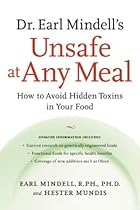 And don't forget soybeans and soy-based foods, which are high in many cancer-fighting phytochemicals. (See section 109.)
There's little doubt that what we eat affects how we feel. In fact, numerous experiments have proven that many symptoms of mental illness can be switched off and on by changing the diet and altering nutrient levels in the body.
150. Food Mood Swingers
NUTRIENT
WHAT IT CAN DO
Vitamin Bj (thiamine)
Large amounts have been found to tranquilize anxious individuals and alleviate depression. And don't forget soybeans and soy-based foods, which are high in many cancer-fighting phytochemicals. (See section 109.)
There's little doubt that what we eat affects how we feel. In fact, numerous experiments have proven that many symptoms of mental illness can be switched off and on by changing the diet and altering nutrient levels in the body.
150. Food Mood Swingers
NUTRIENT
WHAT IT CAN DO
Vitamin Bj (thiamine)
Large amounts have been found to tranquilize anxious individuals and alleviate depression. |
Alan Keith Tillotson, Ph.D., A.H.G., D.Ay.
See book keywords and concepts |
 Various related species can be found around the world, but they contain different amounts and types of phytochemicals. In Nigeria, people use the root of fagara (related to prickly ash) as a chewing stick to aid in oral hygiene. And in Nigeria and Ghana, a decoction of the root bark is a common treatment for toothache pain, childbirth pain, and trauma and is also used as a general tonic.
Doctors in Nigeria use fagara (F. zanthosyloides) to reduce the painful crisis of the genetic disease sickle cell anemia. Various related species can be found around the world, but they contain different amounts and types of phytochemicals. In Nigeria, people use the root of fagara (related to prickly ash) as a chewing stick to aid in oral hygiene. And in Nigeria and Ghana, a decoction of the root bark is a common treatment for toothache pain, childbirth pain, and trauma and is also used as a general tonic.
Doctors in Nigeria use fagara (F. zanthosyloides) to reduce the painful crisis of the genetic disease sickle cell anemia. |
| Both cayenne and black pepper have shown to speed up absorption of various chemicals including phytochemicals.
It is also known that many herbs can change the way the body processes and eliminates drugs in the liver. Many herbs and common foods have effects on liver enzyme systems and can change blood levels of drugs. St. John's wort was implicated in January 2000 in lowering the blood levels of AIDS drugs and cyclosporine, a drug used to prevent organ rejection. In both of these cases, the results could be deadly. |
Judith Wills
See book keywords and concepts |
 Phytoestrogens
These are a group of phytochemicals with a structure similar in effect to estrogen, the female hormone that protects against heart disease and osteoporosis. They also appear to be linked with a reduction in risk of the hormone-dependent cancers, such as cancer of the breast and womb.
There are two main types of phytoestrogen, isoflavones and lignans. Isoflavones are found in legumes, particularly soybeans, and several trials have shown a link between low incidence of breast cancer development and high soy intake. Phytoestrogens
These are a group of phytochemicals with a structure similar in effect to estrogen, the female hormone that protects against heart disease and osteoporosis. They also appear to be linked with a reduction in risk of the hormone-dependent cancers, such as cancer of the breast and womb.
There are two main types of phytoestrogen, isoflavones and lignans. Isoflavones are found in legumes, particularly soybeans, and several trials have shown a link between low incidence of breast cancer development and high soy intake. |
The Complete Book of Alternative NutritionSelene Y. Craig, Jennifer Haigh, Sari Harrar and the Editors of PREVENTION Magazine Health Books
See book keywords and concepts |
| Garlic (crushed or sliced to release phytochemicals)
4. Onions
5. Tomatoes
6. Citrus fruits (especially the white pulpy parts)
7. Cabbage
8. Cantaloupe or watermelon
9. Beans
10. Tea (green or black)
Flavonoids also keep your arteries free and clear, say researchers. Essentially, they just use their antioxidant powers to prevent "bad" LDL cholesterol from oxidizing, and if cholesterol doesn't oxidize, it doesn't adhere to artery walls.
In the wine rack, flavonoids enter the picture in the form of quercetin. |
Gary Null, Ph.D.
See book keywords and concepts |
 According to the Journal of the American Dietetic Association (April 1995):
It is the position of the American Dietetic Association (ADA) that specific substances in foods (e.g. phytochemicals as naturally occurring components and functional food components) may have a beneficial role in health as part of a varied diet. The Association supports research regarding the health benefits and risks of these substances. Dietetics professionals will continue to work with the food industry and government to ensure that the public has accurate scientific information in this emerging field. According to the Journal of the American Dietetic Association (April 1995):
It is the position of the American Dietetic Association (ADA) that specific substances in foods (e.g. phytochemicals as naturally occurring components and functional food components) may have a beneficial role in health as part of a varied diet. The Association supports research regarding the health benefits and risks of these substances. Dietetics professionals will continue to work with the food industry and government to ensure that the public has accurate scientific information in this emerging field. |
| Effects of the phytochemicals, Curcumin and Quercetin, Upon Azoxymethane Induced Colon Cancer and 7,12-dimethylbenz[a]anthracene-induced Mammary Cancer in Rats," Carcinogenesis, 17(6), June 1996, p. 1305-1311.
Results of this study showed that curcumin had inhibitory effects on TPA-induced tumor promotion in DMBA-initiated mouse skin.
—M.T. Huang, et al., "Effects of Curcumin, Demethoxycurcumin, Bisdemethoxycurcumin and Tetrahydrocurcumin on 12-0-tetradecanoylphorbol-13- Acetate-induced Tumor Promotion," Carcinogenesis, 16(10), October 1995, p. 2493-2497. |
The Complete Book of Alternative NutritionSelene Y. Craig, Jennifer Haigh, Sari Harrar and the Editors of PREVENTION Magazine Health Books
See book keywords and concepts |
| Researchers are finding phytochemicals in soy that have anti-carcinogenic properties."
While Americans are familiar with soy as a milk substitute in baby formulas, other soy products like miso (a savory condiment), soy flour, tempeh (a meatlike patty) and tofu have been staples of Asian cuisine for thousands of years. In fact, Asians use soy in many of the same ways that Americans use meat.
In Asia, people eat about two to three ounces of soy a day, while Americans get about one-tenth that amount, if any. It's our loss. Many researchers, like Kenneth Setchell, Ph.D. |
Simon Mills and Kerry Bone
See book keywords and concepts |
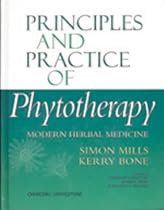 In this context, it is interesting to note that removal of the phytochemicals (including the isoflavones) from soya protein eliminates the antiatherosclerotic effects observed with untreated soya.278
Most of the recent interest in isoflavones has focused on their potential to prevent and possibly treat cancer, especially hormone-dependent cancers such as breast and prostate cancer. These effects can be categorized as following from either the hormonal activity of isoflavones or from their inhibition of a number of aspects of tumour cell function. In this context, it is interesting to note that removal of the phytochemicals (including the isoflavones) from soya protein eliminates the antiatherosclerotic effects observed with untreated soya.278
Most of the recent interest in isoflavones has focused on their potential to prevent and possibly treat cancer, especially hormone-dependent cancers such as breast and prostate cancer. These effects can be categorized as following from either the hormonal activity of isoflavones or from their inhibition of a number of aspects of tumour cell function. |
The Complete Book of Alternative NutritionSelene Y. Craig, Jennifer Haigh, Sari Harrar and the Editors of PREVENTION Magazine Health Books
See book keywords and concepts |
| But as we pile up vitamins, minerals, phytochemicals, amino acids, fiber and the rest, you have to wonder if we're not coming ever closer to joining the ranks of George, Jane, Judy and Elroy Jetson.
"We're not even close," assures James Heffley, Ph.D., a biochemist and nutrition adviser in Austin, Texas. "We're just now at the point where we can say that we know there are additional substances in foods besides nutrients that are beneficial. And it's almost a certainty that we don't know all the things that are good for us. |
| Fruits and vegetables are also rich in phytochemicals, a group of compounds that appear to have anti-cancer properties. Researchers say that this unique combination may play a key role in fighting off cancer.
In the fiber department, modern hunter-gatherers get a mega-dose by eating 40 to 50 grams a day—two or three times what our highly refined Western diet contains. And some early societies, such as early Native American hunter-gatherers, probably ate as much as 130 grams of fiber a day. |
Gary Null, Ph.D.
See book keywords and concepts |
 This is the best way to get high amounts of phytochemicals. (Some recommended juices are listed later in this chapter.)
•Recommending Diet by Blood Type...There is evidence to the effect that a persons blood type determines the type of arthritis expressed, and the kind of treatment needed. This observation was first made by a naturopathic doctor, James D'Adamo, over 25 years ago. This is the best way to get high amounts of phytochemicals. (Some recommended juices are listed later in this chapter.)
•Recommending Diet by Blood Type...There is evidence to the effect that a persons blood type determines the type of arthritis expressed, and the kind of treatment needed. This observation was first made by a naturopathic doctor, James D'Adamo, over 25 years ago. |
Dr. Gary Null
See book keywords and concepts |
 If you put those juiced phytochemicals into the body every hour, these cancer patients will have their cellular enzyme systems speeded up so that the individual cells can spit up toxins.
"Eating an excess of empty calories and proteins creates toxicity that causes the immune system to overproduce white blood cells that aren't very adept at what they do. Once you restrict protein and calories and get the nutrient level up, these patients' immune systems become intelligent again. They stop making excess stupid white cells, and create more lymphocytes interested in more types of challenges. If you put those juiced phytochemicals into the body every hour, these cancer patients will have their cellular enzyme systems speeded up so that the individual cells can spit up toxins.
"Eating an excess of empty calories and proteins creates toxicity that causes the immune system to overproduce white blood cells that aren't very adept at what they do. Once you restrict protein and calories and get the nutrient level up, these patients' immune systems become intelligent again. They stop making excess stupid white cells, and create more lymphocytes interested in more types of challenges. |
Gary Null, Ph.D.
See book keywords and concepts |
 In addition to naturally occurring phytochemicals, scientists are developing what they call functional foods which consist of any food or food ingredient providing health benefits beyond the traditional nutrients it contains. In addition to naturally occurring phytochemicals, scientists are developing what they call functional foods which consist of any food or food ingredient providing health benefits beyond the traditional nutrients it contains. |
Dr. Gary Null
See book keywords and concepts |
 Herbal Pharmacy
Plants containing phytochemicals with antibacterial/antifungal activity, in order of potency:
Coptis chinensis (Chinese goldthread) Coptis sp. (generic goldthread) Mangifera indica (mango) Coptis japonica (huang lia) Hydrastis canadensis (goldenseal) Hamamelis virginiana (witch hazel) Phyllanthus emblica (emblic) Punica granatum (pomegranate) Quercus infectoria (aleppo oak) Berberis vulgaris (barberry) Phellodendron amurense (huang po) Argemone mexicana (prickly poppy) Fragaria sp. Herbal Pharmacy
Plants containing phytochemicals with antibacterial/antifungal activity, in order of potency:
Coptis chinensis (Chinese goldthread) Coptis sp. (generic goldthread) Mangifera indica (mango) Coptis japonica (huang lia) Hydrastis canadensis (goldenseal) Hamamelis virginiana (witch hazel) Phyllanthus emblica (emblic) Punica granatum (pomegranate) Quercus infectoria (aleppo oak) Berberis vulgaris (barberry) Phellodendron amurense (huang po) Argemone mexicana (prickly poppy) Fragaria sp. |












